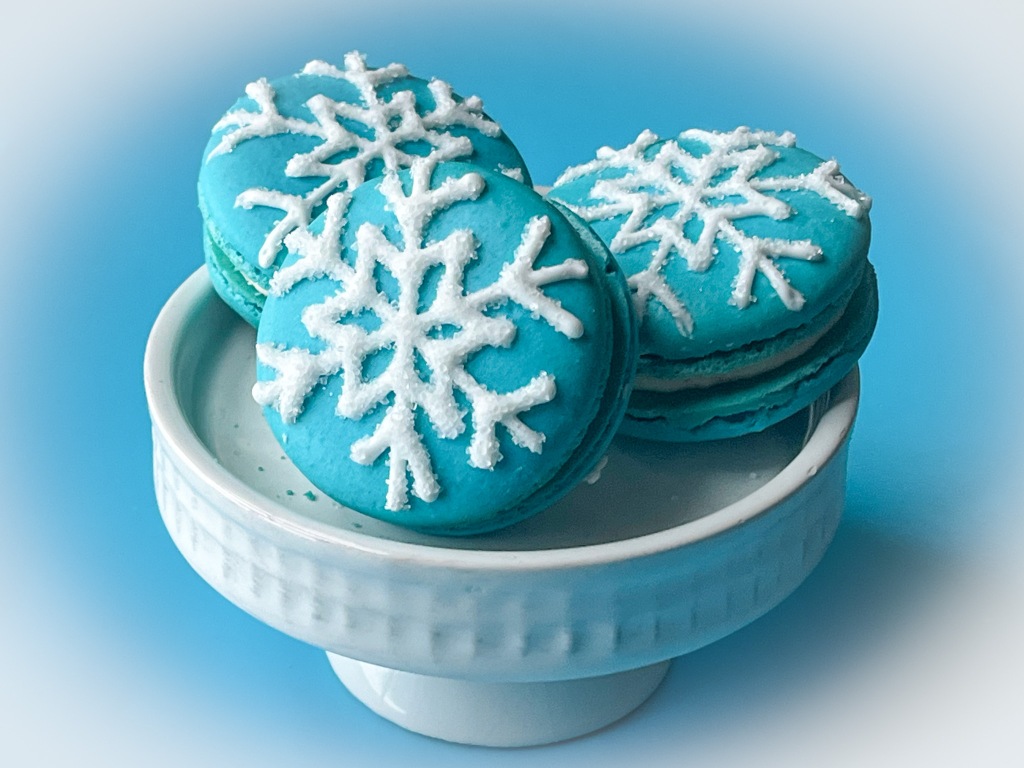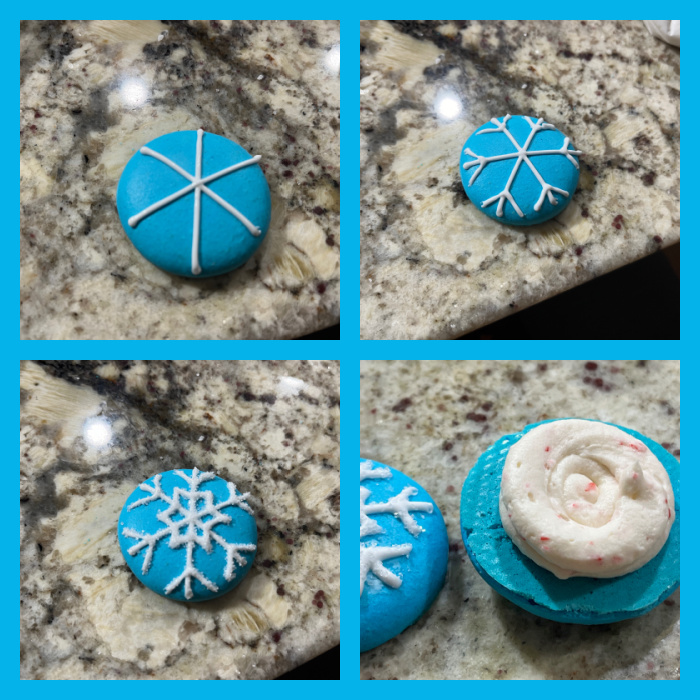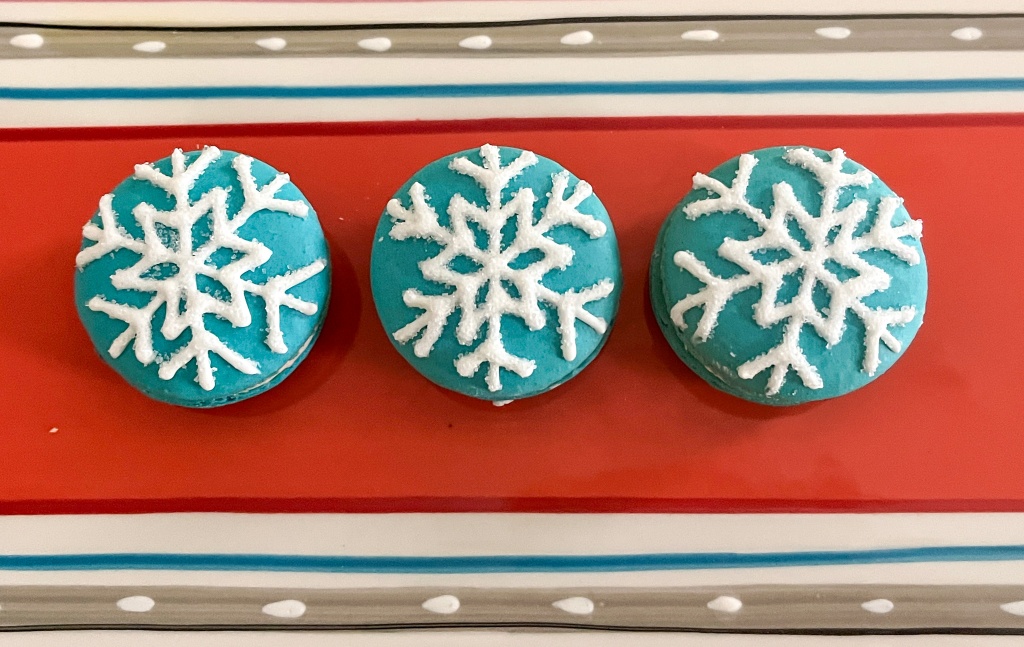The recipe used for the shells is my default that you can find here. Simply divide the batter in three portions and use the colors of your choice. For the Ruby Red Ganache Macarons, I used yellow, green and plain batter. For the Neapolitan Version I used brown, pink and plain. I added a small amount of cocoa powder to the brown component. Decorations were all made with fondant and a silicone mold, later painted with luster powder and vodka.
RUBY RED GANACHE AND JAM MACARONS
220g ruby red chocolate
80g heavy cream
pinch of salt
mixed fruit jam (store bought is fine)
Heat the cream in a small saucepan until bubbles form around the edges. Pour over the chocolate, add a pinch of salt, cover and let sit for five minutes. Whisk gently at first, continue whisking until the chocolate is fully dissolved. If necessary, place in the microwave at 50% power for a minute. Reserve at room temperature for 1 hour or place in the fridge for 30 minutes before using.
Fill the shells with a small dollop of jam and a circle of ganache around it. Proceed as normally, keeping macarons overnight in the fridge to mature.
The jam is a nice contrast with the sweetness of the ganache and the shells. We love this brand of jam, or I should say Phil loves it, I don’t eat jam that much, prefer to use it in recipes such as this one…
.
Moving on…
STRAWBERRY GANACHE MACARONS
230g white chocolate, finely chopped
80g heavy cream
1/4 tsp strawberry natural flavor (I used Olivenation)
a drop of pink food color
1 tbs strawberry jam (store bought is fine)
Heat the cream in a small saucepan until bubbles form around the edges. Pour over the chocolate, cover and let sit for five minutes. Whisk gently at first, continue whisking until the chocolate is fully dissolved, then add the jam. If necessary, place the bowl in the microwave at 50% power for a minute. Reserve at room temperature for 1 hour or place in the fridge for 30 minutes before using.
Fill the shells with a small dollop of ganache and keep the macarons overnight in the fridge to mature.
ENJOY!
to print both recipes, click here
Adding a little drop of pink food gel is a good idea, otherwise the ganache tends to have a pale brownish color. Ganache fillings pair well with fruit, so both recipes today take this approach, and they are perfect for Springtime.
.
ONE YEAR AGO: Fiesta Bakes for Cinco de Mayo
TWO YEARS AGO: Thai-Meatballs Over Wilted Bok-Choy
THREE YEARS AGO: Asparagus with Gunpowder Masala
FOUR YEARS AGO: The Home Bakers Collective, April Project
FIVE YEARS AGO: Asian-Style Eggplant Meatballs
SIX YEAR AGO: Uzbek Flatbread
SEVEN YEARS AGO: First Monday Favorite – Black Sesame FOUR
EIGHT YEARS AGO: Chocolate Orange Mini-Cakes
NINE YEARS AGO: In My Kitchen, May 2015
TEN YEARS AGO: P90X3, a Review of Tony Horton’s Latest Fitness Program
ELEVEN YEARS AGO: Pasta and Mussels in Saffron Broth
TWELVE YEARS AGO: Triple Chocolate Brownies
THIRTEEN YEARS AGO: Shanghai Soup Dumplings
FOURTEEN YEARS AGO: Bite-sized Chocolate Pleasure




























